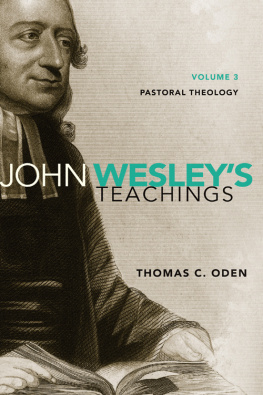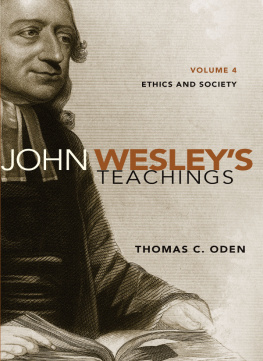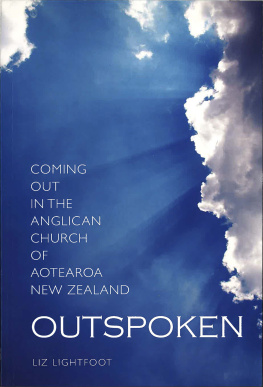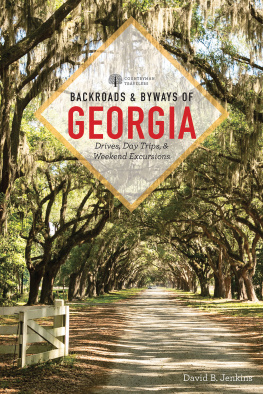Charles Wesley in America
Georgia, Charleston, Boston
S T Kimbrough Jr.
foreword by Ryan Nicholas Danker
Charles Wesley in America
Georgia, Charleston, Boston
Copyright 2020 S T Kimbrough Jr. All rights reserved. Except for brief quotations in critical publications or reviews, no part of this book may be reproduced in any manner without prior written permission from the publisher. Write: Permissions, Wipf and Stock Publishers, W. th Ave., Suite , Eugene, OR 97401 .
Pickwick Publications
An Imprint of Wipf and Stock Publishers
W. th Ave., Suite
Eugene, OR 97401
www.wipfandstock.com
paperback isbn: 978-1-7252-7219-4
hardcover isbn: 978-1-7252-7220-0
ebook isbn: 978-1-7252-7221-7
Cataloguing-in-Publication data:
Names: Kimbrough, S T, Jr., author. | Danker, Ryan Nicholas, foreword.
Title: Charles Wesley in America : Georgia, Charleston, Boston / by S T Kimbrough Jr. ; foreword by Ryan Nicholas Danker.
Description: Eugene, OR: Pickwick Publications, 2020 | Includes bibliographical references and index.
Identifiers: isbn 978-1-7252-7219-4 ( paperback ) | isbn 978-1-7252-7220-0 ( hardcover ) | isbn 978-1-7252-7221-7 ( ebook )
Subjects: LCSH: Wesley, Charles, 17071788 | United StatesChurch historyth century | Methodist Church (Great Britain)Clergy | Methodist Church (Great Britain)MissionsGeorgiaHistoryth century | GeorgiaChurch historyth century
Classification: bx8495 k55 2020 ( print ) | bx8495 ( ebook )
Anon., Charles Wesley [the lily portrait], ca. 1735 , used with permission of Peter S. Forsaith, the Oxford Centre for Methodism and Church History, Oxford Brookes University, Oxford, UK. The original painting is located at the New Room in Bristol, UK.
Manufactured in the U.S.A. 12/07/20
Foreword
M ore than three centuries after his birth, Charles Wesley continues to inspire. I can still remember distinctly a day I spent in London with a student a number of years ago. We got lost, and in our attempt to figure out where we were going we came across Marylebone and its parish church. I knew that Charles Wesley was buried therehe was very insistent that he wanted to be buried in the consecrated ground of his local parish, carried by six clergy of the Church of Englandbut I did not know exactly where his grave was located. I insisted that we trudge around the building even if it was getting too dark to look for the grave. Having circled the building twice, we still could not find it. So I looked around for adjacent buildings that may have been built since 1788 , and sure enough, behind one of them was the obelisk gravestone. I was elated. Here was one of my heroes. But when I looked over at my student, he was nonplussed. A Roman Catholic, he had no idea who Charles Wesley was until I told him that this man had written Hark, the Herald Angels Sing. With that realization, he lit up like a Christmas tree.
Scholars continue to discover the man whose lyrical theology has shaped the worldwide evangelical movement, and the hearts of Christians well beyond early Methodism. At the heart of the evangelical movement was an encounter with God, a transformational encounter so radical that it was referred to as a new birth. Charles Wesley was able, primarily through poetry, to put the ineffable into words, even words that could be sung and therefore distinctly remembered.
This man made for friendship, as his wife Sally described him, is best known for his poetry, most often in the form of hymns. Yet Charles Wesley is a complex figure. He was a churchman through and through, a family man, and devoted husband. The letters between Charles and Sally reveal a beautiful marriage and are reminiscent of the letters of John and Abigail Adams. Charles Wesleys vision for Methodismone that would eventually diverge from his brotherswas the original intention of the movement, a renewal of the Established Church. But all of this came after his time in America.
Having attended Oxford, Wesley soon made a sojourn to the newly minted colony of Georgia. The American episodefor both Charles and John Wesleyhas been one of the most misunderstood periods of early Methodism. Often simply seen as the precursor to the more interesting moments after their evangelical conversions in May of 1738 , the value of the American episode is lost, or even misconstrued. This is one of the main reasons why the present volume is so vital.
Charles comes alive in these pages as a young adventurer in his twenties, a missionary, and an administrator. He is moody. He is also very human as is seen in his numerous bouts with ill health, a theme that will continue throughout his entire life. His classical education shows through, even in trying times. And it is in America, as Kimbrough notes, that Wesley first exercised his priestly ministry, celebrating the sacraments and preaching the word of God.
Wesley is also in the midst of controversy from the time he lands in Georgia until the time he departs from Boston. And yet he still holds on to a rosy view of the colonies years later. One of the most vital contributions that Kimbrough makes to Charles Wesley studies is to examine the shorthand material of Wesleys journal, previously avoided or even covered up by scholars wanting to avoid controversial elements in the narrative. Here we see Wesley on full display.
Kimbrough digs deeply into the American narrative, not stopping at the Manuscript Journals vital as they arebut filling in the details of the narrative with letters and historical details about the colonial context, much from primary source materials. He even extends the narrative by examining relationships that would continue after Wesley returned to England. These include his continued encounters with two enslaved men whom Wesley met in Charleston and encountered again in Bristol.
Kimbrough examines Wesleys views of the American Revolution as seen in his secular poetry later in life, revealing not only his allegiance to the Hanoverian dynasty but also his unshakable Tory commitments. Wesley is often remembered by Methodists for his acerbic challenge to his brothers irregular ordinations, yet they need also to see his challenge to the generals of the British forces in America to get a better view of his poetic arsenal.
On a personal note, Im particularly glad to see further analysis of Wesley in Boston having lived and studied there and published on Charles Wesley in Boston. I still rememberas I sat in the top floor of the Boston Athenaeumthe moment when I realized not only who the doctor mentioned in Wesleys journal was, Nathaniel Williams, but that he was buried about forty feet away! Kimbroughs in-depth analysis of the Boston period expands the narrative even further.
For years, S T Kimbrough Jr. has tirelessly sought to make Charles Wesley known, through publications, analysis of his theology, and also through the publication of little-known portions of Wesleys vast poetic corpus. The Manuscript Journals , another project Kimbrough published in 2007 with Kenneth Newport, will serve as the critical edition of Charles Wesleys journal. Kimbrough founded The Charles Wesley Society and served as its first president and director of publicatioins. He has even played Wesley in a superb one-man show titled Sweet Singer ! It was within the Wesleyan studies world that we first met and I have had the distinct pleasure to learn from S T now as a colleague and friend for many years. The present volume is yet one more addition to his invaluable contribution to the field.
Ryan Nicholas Danker
Associate Professor of Church History and Methodist Studies









